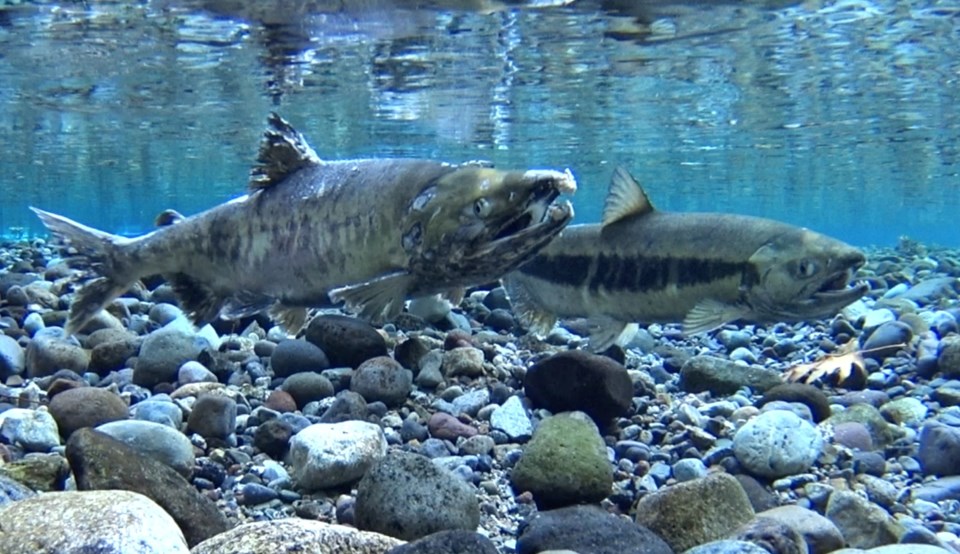According to Bowen Island Fish and Wildlife Club President Tim Pardee 10 coho salmon have been spotted swimming into Bowen’s lagoon in the past week. This is very good news, he adds, because other than a few spotted last year, coho have not been seen coming into Bowen waters in a decade, and a strong return of them would mean that at least one kind of salmon has returned to our fresh water streams this season.
Pardee says members of the Fish and Wildlife Club were anticipating a return or pink salmon towards the end of August, but they did not come.
“We released 100,000 pink eggs for the first time two years ago,” says Pardee. “They spend two years in the ocean before spawning, so this was the year for them to return. Unfortunately, the number of pink that returned to Squamish was also low, so low that we will not get more eggs to release this year.”
After last year’s record return of roughly 1,200 chum to Bowen’s lagoon, salmon-watchers had their eyes on the waters of Mannion Bay hoping for another strong return this October and November.
“We were really pumped,” says Pardee. “But in the end, we didn’t see any. It was tremendously disappointing. Fortunately, enough Chum returned to Squamish that it looks as though we will be getting our full allotment of 200,000 eggs for this year.”
Bob Turner says he’s spent a time this season in the streams and rivers near Squamish, and says he has been able to see the chum filling up the smaller streams.
Around Bowen what he has seen is large schools of anchovies.
“I’ve seen huge schools off Tunstall Bay, with 20 seals swimming alongside, a huge sea lion and hundreds of gulls,” says Turner. “A sea lion or seal will come up through the school creating an eruption of fish on the surface, and that’s when the gulls go crazy.”
Humpbacks, he says, seem to also be enjoying the anchovies as they’ve been appearing on the south-west side of the island regularly over the past few weeks.
“I suspect that warmer waters may be impacting the salmon return,” says Turner. “Salmon prefer cold water, and anchovies are a warm water fish.”
This is a theory that Tim Pardee seems to agree.
“There’s no silver bullet as to why the returns have been low but we know salmon don’t like warm water and there is this blob of warm water out in the Pacific,” says Pardee. “When the fry entered the ocean two or three years ago, they would have entered into warmer and less nutrition waters with more predators, like mackrel. This meant a high mortality rate for those young salmon. The interesting thing is, that the pink salmon that did survive and make it back into the cooler Pacific waters had less competition for food, and so when they did return to Squamish this year, they were larger than usual.”
As for the Coho, several were spotted entering the lagoon two weeks ago, and then more were spotted last week.
“Rob Bell-Irving from the Department of Fisheries and Oceans recommends that we multiply the number seen by 10,” says Pardee. “They tend to hide in shadows and under logs. The way we’re taught to look for them is to get out in the stream with hip waders on and poke into the shadowy places with a long stick, looking for movement. So, while we are happy to report that the coho are coming back, and that they are strong swimmers that should be able to make it right up to the fish ladder and into Terminal Creek, the run will likely not be as visually spectacular as last year’s chum run.”
To gain a whole new appreciation for the upriver journey that salmon take to give life to the next generation, check out Bob Turner's mini documentary on pink salmon spawning in the Stwamus River.



